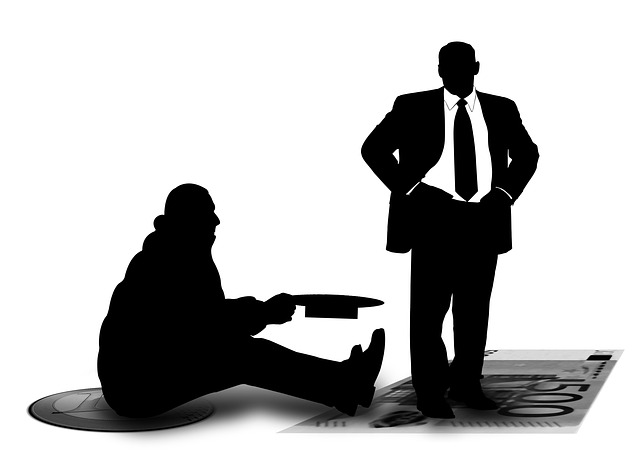Storytelling and Politics: The Value of Empathy
Some might think that the art of storytelling is important only to novelists and other writers, but the power of a good story is most clearly found in politics. Beyond campaign speeches that claim to give voice to the “average Joe,” the dominant political narrative both shapes and reveals preferential outcomes. In particular, stories of the “other” — the poor, racial/ethnic/religious minorities, etc. — provide evidence of a society’s true values and deepest insecurities. At the heart of the issue is the extent to which these stories describe the world as it truly is or as we hope/fear it is.
A recent study suggested that those who read fiction and become emotionally involved in the story have higher levels of empathy. Empathy is important because it prevents the development of messiah complexes that encourage language such as “saving” or “empowering” others. Instead, the attempt to understand the feelings of others allows us to see different groups as similar to ourselves. My concern is that the political discourse in the U.S. and its effects upon recent legislation demonstrate that empathy is a scarce quality. The examples below are evidence of the power of political narrative and the deeply embedded and subconscious process of “othering” poor and black Americans.
For example, with respect to the recent debate over food stamps, many conservative outlets including Fox News and Heritage.org promoted the story of Jason Greenslate, a self described California surfer, who crashes with friends and family and eats using food stamps. This is unquestionably an abuse of the system. Liberals, on the hand, pointed out that “nearly half of food stamp recipients are children and another 26 percent are adults living with children” (Rania Khalek 2013). Data from: CBPP. Both are true, but that does not mean that they should be given equal weight. When deciding on political policies, we need to know how representative a particular anecdote is. If only 1% of the population are abusing the system, then weight has to be given to the 99% who would go hungry without the SNAP program. On the other hand, if widespread abuse is rampant, we should be cautious of abusing the sentimentality behind stories of hungry children.
In the case of SNAP (supplemental nutrition assistance program) the data shows that “cheaters” are rare. In fact, only $1 out of $100 is wasted on fraud, which is remarkable and rarely in seen in the public or private sector. (In contrast fraud and out of control spending is a much greater problem for the crop insurance program included in the Republican sponsored Farm Bill — a troubling fact that even the Heritage Foundation has pointed out). Meanwhile 45% of beneficiaries are children, 9% are over sixty, 30% had jobs. The remaining 16% were on disability or unemployed. And while some of the unemployed may be like the surfer dude mentioned above, most genuinely cannot find work in an economy where there are three unemployed people competing for every job opening. My larger point, however, is not about the food stamps program but what it says about our personal values when we choose to emphasize a story that misrepresents the larger group.
There are additional reasons to be concerned about the lack of empathy towards those who are disadvantaged. Two recent studies (Hoffman and Waytz 2012; Forgiarini, Gallucci, and Maraita 2011) found that white people assume that black people feel less pain than other whites. Startlingly, these studies found that when whites witnessed a white person and a black person exposed the same stimuli they consistently rated the black person as having experienced less pain. This is not a simple case of racism because the Hoffman and Waytz study also found evidence that this bias is rooted in perceptions of status. Thus, the stories we tell about “the other” tend to dehumanize these groups on a level much deeper than commonly held prejudices.
The way out of this problem is to create more opportunities to interact with those outside of our peer groups, thereby, reducing the ability to see others as somehow fundamentally different than ourselves. Research has found that intergroup trust building exercises increase empathy and reduce discrimination. An approach that might resonate more concretely comes from Peter Chin, who suggests building and participating in congregations that encourage diversity. His example can also be extrapolated to other types of community organizations.
Another approach was epitomized by Panera’s CEO’s experiment to live off a food stamp diet for seven days. While I am usually pretty skeptical of these type of stories as publicity stunts, but in reading the story I was genuinely moved by a message that captured to the spirit of “walking in another’s shoes.”
Developing empathy within ourselves and society takes conscious effort. Most Americans, including myself, spend our days surrounded by people with similar income, education, and political beliefs. The desegregation of news has made it increasingly possible to not only expose ourselves to the types of stories we are interested in but those that also reflect our own worldview back to us. Yet, if we do not make a greater effort to become peers with those outside of our self-selected groups, we risk making societal decisions that are ultimately damaging and counterproductive to the good of the larger community.

This is a constant struggle for people working in public health and part of the reason I am taking coursework in health policy.
Thanks Amanda! I found that study on race and pain to be quite shocking and with significant implications for the healthcare industry. You, of course, are wonderful. Just as soon as I get caught up on some deadlines, I really am going to restart the podcast. Your experience in rural Arkansas is incredibly important to the larger dialogue on health disparities in the US.